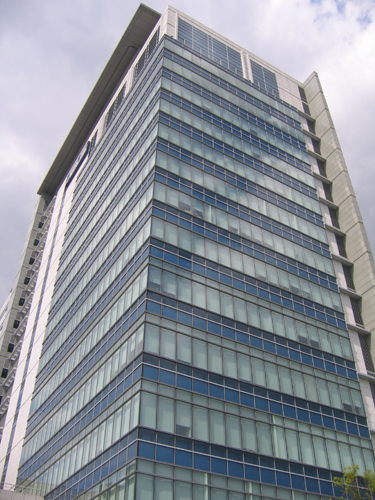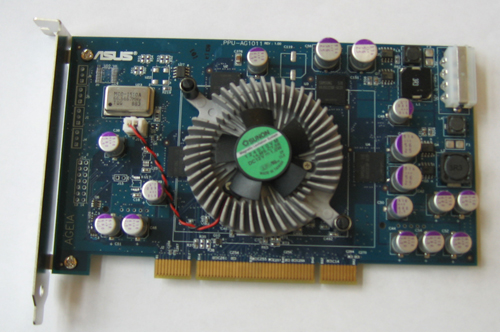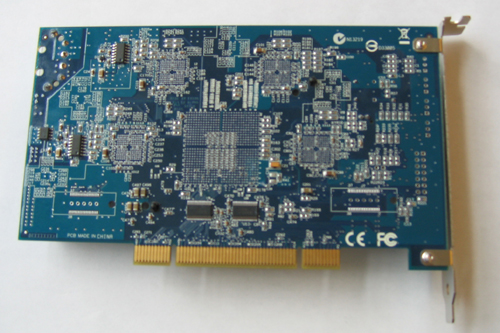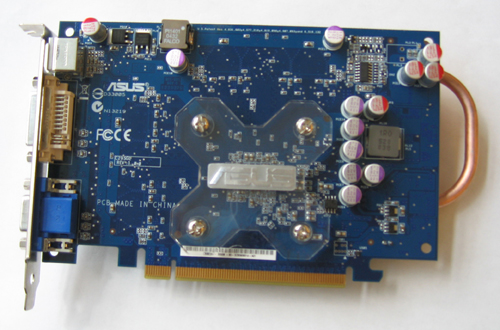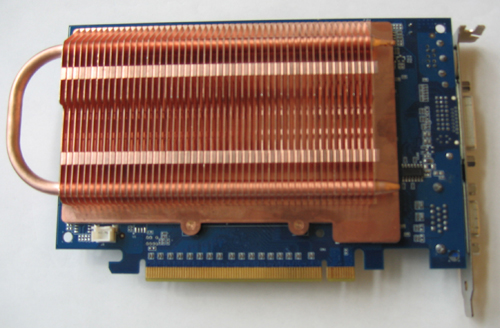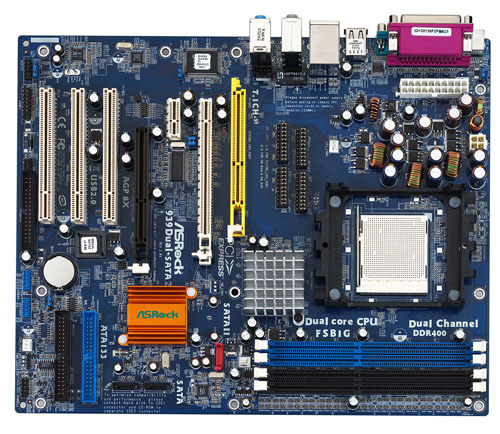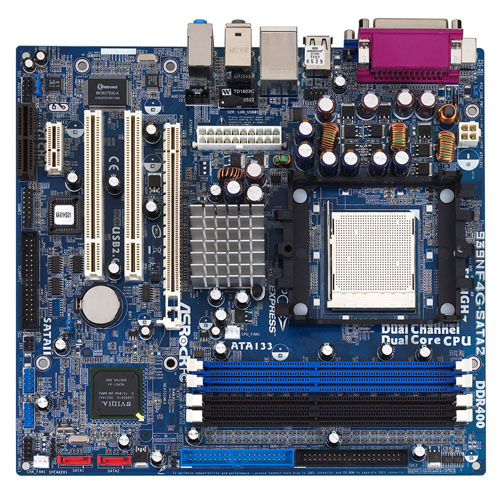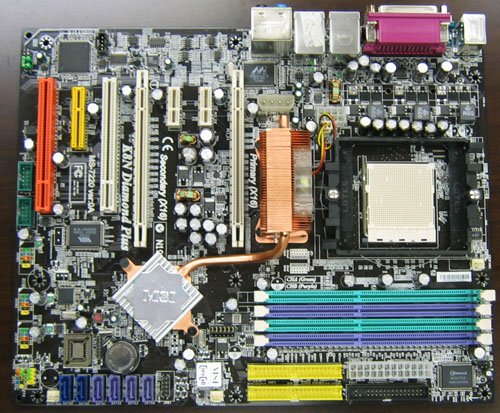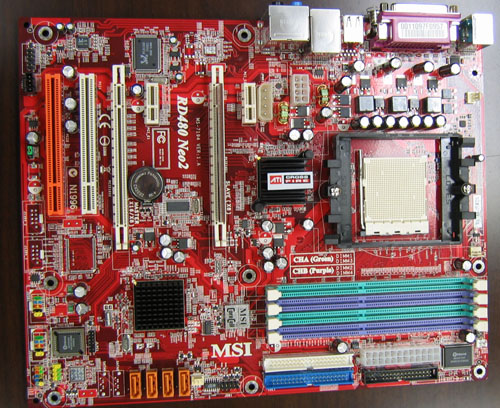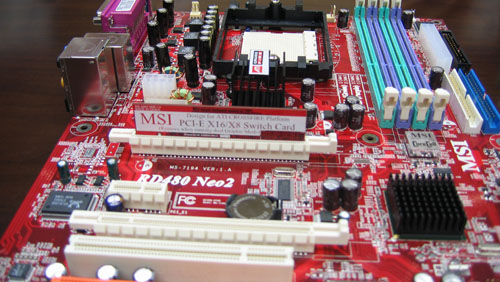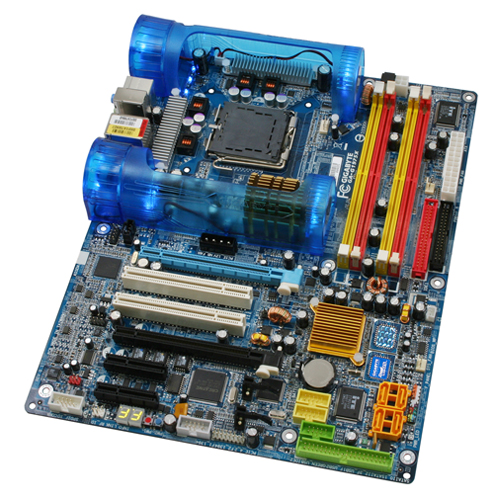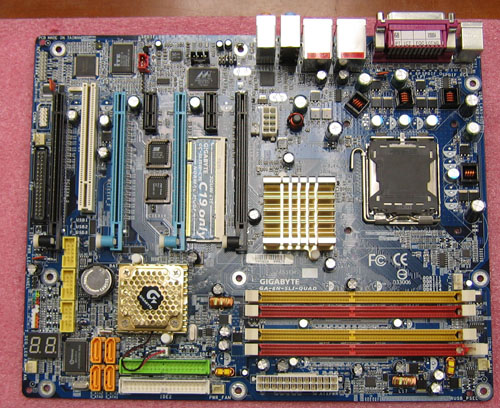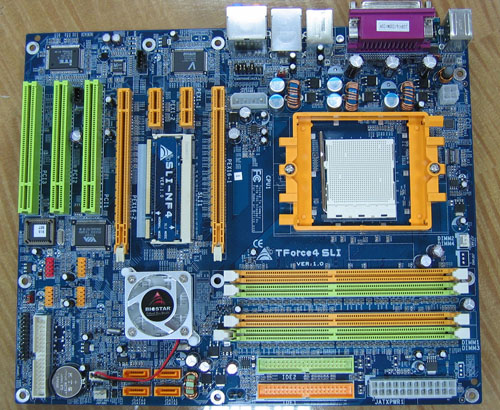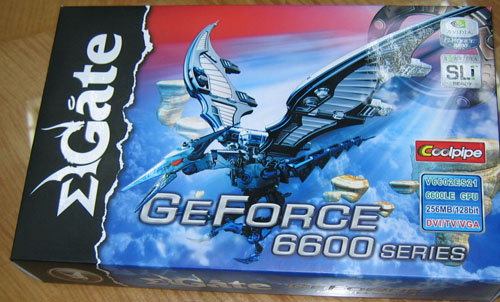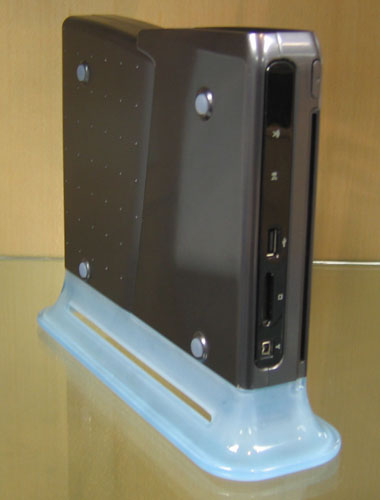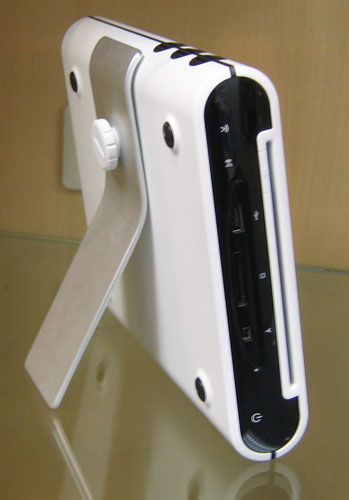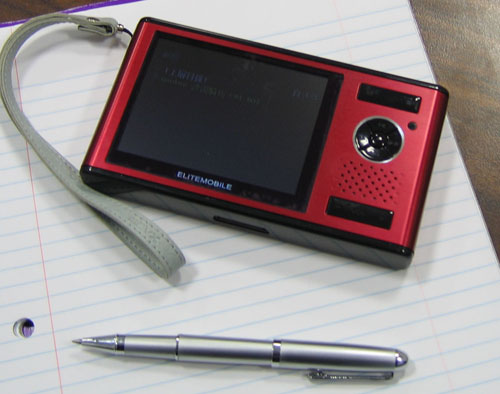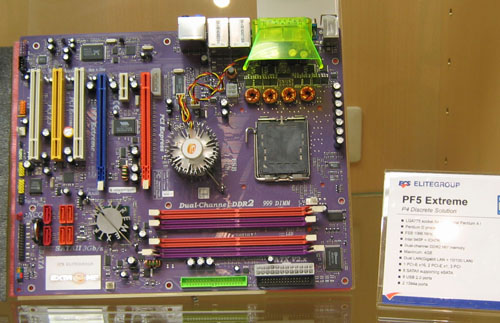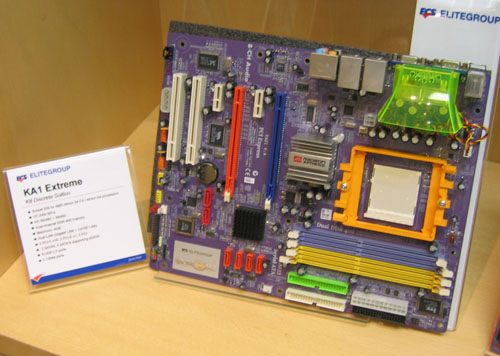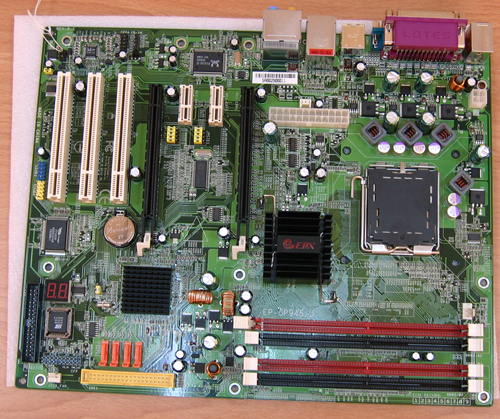
Original Link: https://www.anandtech.com/show/1842
Q4 Motherboard and Graphics: Tour de Taiwan
by Kristopher Kubicki on November 2, 2005 10:14 PM EST- Posted in
- Trade Shows
We recently had the opportunity to visit some manufacturers in Taiwan, and with that opportunity, we spent a lot of time previewing new motherboards and graphics products. Below, you can see a little bit of what several vendors have to offer for the remaining portion of Q4 and Q1’06.
ASUS
Arguably, ASUS has the “sexiest” HQ in all of Taiwan. It comes complete with a rooftop swimming pool and full cafeteria for their 6,000 employees who are based there. Since they win the sexiest HQ in Taiwan award, they get to go first in our coverage.
Perhaps first on our list of questions for ASUS was the AGEIA PhysX expansion card. We all know ASUS is the primary manufacturer for all new PhysX cards, but the question on everyone’s mind is availability. It turns out that the PhysX card was done and ready several months ago inside the company, but the company is waiting on game developers to embrace the middleware before a worldwide launch.
Unreal is the spearhead application to support PhysX, and everyone is extremely eager for that title. Unfortunately, the next Unreal is upwards of a year away, so other titles will have to support sales until then. City of Villains and Bet on Soldier are the only mainstream titles available right now with PhysX support, and the next Tom Clancy game that's due out soon will also support the card. With so few games, it’s going to be real hard for ASUS and AGEIA to sell cards – don’t be surprised if retail cards are not available until January or February. Until then, here are a couple of teasers of their retail card.
Havok also has a competing middleware now, which could give AGEIA a run for its money, since a dedicated physics card would be unnecessary. What we've heard so far is that it will leverage the power of the NVIDIA and ATI GPUs in order to speed up physics processing. When you consider games like HL2 that can be largely CPU limited, using extra GPU power to do physics calculations makes sense. In other games like FEAR, though, the GPU is more of a bottleneck and running extra computations there isn't likely to improve performance. We don't have specifics on performance right now, but more details will follow in the near future.
Another big announcement for ASUS is the expansion into the workstation market. Multiprocessor, high end components have been a huge cash cow for companies like Tyan and Supermicro, but ASUS has had relatively little experience in the field outside of their OEM orders. Obviously, there are a lot of whitebox workstation builders (particularly in the US), and ASUS’s entrance into this market could bring a new level of cost and quality to an otherwise uncontested sector. The first move for ASUS to enter this market includes an Intel based 975X motherboard. ASUS’s prototype was very early at this point, so we can’t comment much on what the first workstation motherboard will actually look like.
Everyone and their brother are getting into silent graphics cards, and ASUS is no exception. However, unlike the other manufacturers, ASUS actually has something interesting going on. Historically, the largest problem with graphics adaptors is that heat gets trapped between the face of the graphics card and the lowest portion of the chassis. The resulting dead spot for heat is actually one of the reasons why Intel attempted to push the BTX standard. ASUS decided to just SMT the components of the video card onto the other side of the graphics card. Thus, rather than heat getting trapped near the bottom of the case, the heat from the ASIC radiates upwards toward the CPU cooler. Capacitors and mosfets are still stamped onto the traditional side of the PCB. While the concept of stamping to both sides of the PCB is far from new, ASUS’s application onto a mid-range video card is certainly something that the other manufacturers are not pursuing due to the higher production cost.
ASUS also had a few glimpses of their dual G70 card for us; individually numbered 1 through 2000 for each lucky reviewer. A dual R520 card is in the works based on the same design.
ASRock
Right next door to ASUS, ASRock had a few of their newer motherboards on display for us. ASRock already has a reputation for some unique niche products based on older chipsets.
Interestingly enough, ASRock was the only company on our Tour de Taiwan that had prototype M2 Socket 940 motherboards on display. AMD has a bit of work to do before M2 is ready; ASRock and other companies confirmed with us that M2 is in very early silicon still and benchmarking at this point would not be representative of the final product. Traditionally, late Q3 is a key launch window for AMD.
ASRock had a few other unique products on display, including those wonderful ULi based boards. The yellow riser on this motherboard is actually for a Socket 754 expansion card. ASRock also had M2 socket kits available, but since M2 will require DDR2, we weren’t exactly sure how that riser would work.
ASRock's GeForce 6100 motherboard has also been getting some attention lately as a well rounded, cheap nForce4 motherboard. Expect to see a few more of these in the US too.
Finally, we have ASRock’s Xpress 200 board with a composite-out riser. ATI’s Xpress 200 graphics aren’t exactly earth shattering, but the Radeon IGP packs a pretty heavy punch for such a cheap chipset. This board should appeal to those looking for cheap video out without a large need for a lot of power. You’ll also notice the support for DDR1 and DDR2, a feature standard on all of ASRock’s “Twins” motherboards.
MSI
The big news at MSI was its demonstration of a high end motherboard featuring a Sound Blaster Audigy2 instead of a Live! chip. Our tests have all shown that the nForce4 motherboards that use the SB Live! processor perform much better than motherboards based on the Realtek ALC850, since less processing is offloaded from the DSP to the CPU. MSI and ASUS representatives hinted that a lower cost, smaller footprint Audigy chip for onboard audio is in the works, but there is no word yet on adoption. Below, you can see the new ultra high end AMD board from MSI – the dual X16 K8N Diamond Plus – complete with a C51D bridge and heat pipe.
MSI was also very proud to show off working X1800XL cards. We are still waiting for retail shipments of a lot of these cards, but manufacturers claim that ATI is still in allocation.
MSI also has an X850 Crossfire card, and what better way to run that X850 Crossfire card than with an MSI Crossfire motherboard. Expect to see MSI’s RD480 board any day now.
Like virtually all other manufacturers (other than DFI), the RD480 Neo2 features a ULi south bridge.
Gigabyte
The board that immediately caught our eye at Gigabyte was their new 975X board with a radically new cooling design. Rather than rely on the chassis to generate enough airflow over the Northbridge and mosfets, Gigabyte decided to condense and remove some of the legacy devices from the I/O backports and use that space for small, powerful fans instead. These fans draw air over the core logic and mosfets via a plastic tunnel system, and then exhaust where we are typically accustomed to seeing PS/2 or other legacy device outputs. Such a design is good for cooling, but your ears may not approve.
MSI isn’t the only motherboard manufacturer sporting the new onboard Audigy chips. Gigabyte’s newest touts the same Audigy2 featured on MSI’s high end motherboards. When we asked if there were plans in the future for other Creative based chips, most product managers agreed that interference across the motherboard PCB is beginning to be a problem. The expansion audio cards already produce less interference over onboard chips, and higher quality sound may require the use of a sound module to avoid interference.
Gigabyte is already working on 945GM/GT and will likely become the first to the retail channel with motherboards. Intel’s Mobile on Desktop (MOD) doesn’t seem to have much support from other manufacturers, although everyone likes to talk about it. Gigabyte, on the other hand, is clearly putting its money where its mouth is. While AOpen and DFI are traditionally the only vendors to bring MOD products to market, Gigabyte seems ready to embrace MOD as well.
Gigabyte’s Quad graphics motherboard stirred up a lot of attention over the last few weeks. In fact, once Gigabyte heard that Matrox has plans for a triple-headed PCIe graphics card, the thought of twelve displays on a single motherboard made even the most senior engineer drool.
Gigabyte also has several new DDR2 based video cards and new cooling technologies. As we’ve mentioned a few times before, DDR2 is actually cheaper than DDR1 on the spot market, so low clock video cards that use DDR1 will start using DDR2 all across the board, not just at Gigabyte. More details on this soon!
Biostar
A few weeks ago, we saw the first T-Series motherboard from Biostar, the C51G based TForce 6100-939. Biostar's entire T-Series lineup is gunning for DFI and Abit in the "extreme overclocker" category. High voltage jumpers and a full lineup of easy BIOS saving options certainly give Biostar a lot more bang for the buck than what we've been accustomed to. Biostar's first attempt at a DFI-killer looks like a pretty good one - the Biostar TForce4 SLI:
Another new announcement for Biostar is its entrance into the NVIDIA VGA market. Biostar's Sigma-GATE series (eerily similar to Chaintech's Sigma series...) video cards are a big addition to the company's portfolio. At first, we expect to see low end video cards like the GeForce 6600 and 6600GT (many based on DDR2 configurations), but eventually we will see a full line of cards all the way down from the ultra high end. Biostar recently re-launched their website to reflect the new addition.
Biostar will also feature high end 7800GT and GTX products, although their focus will primarily be the middle to low end video cards. When we talked with Biostar, a lot of emphasis was put on cool, heat-pipe VGA cards.
Not surprisingly, Biostar's near dominance of the C51G (nForce 6100 and 6150) market is mostly due to their ability to get their motherboards into the channel first. Signing large exclusivity deals with NVIDIA is a good way to get first in line for chipset allocation too.
ECS
Like the other Tier 1 manufacturers on our visit, ECS was also working on 945GT and 945GM based motherboards. Unlike the others, however, ECS also had the only working product and a full line of set top systems based around the chipset. Remember that mini-PC from IDF? Here is the actual model from the ECS showroom:
There were also several other prototype mini-PCs based on Yonah as well, including this gem:
Also featured in the show room was an ECS PMP - Portable Media Player. It's an interesting gadget, but it will probably remain a prototype forever.
The surprise board at ECS was their 975X Yonah-compatible model. When NVIDIA was still on board with Intel, 975X Yonah would have meant an SLI Pentium M desktop, but now it looks like we'll just have to settle for a Crossfire MOD board instead. Of course, if ATI decides to release a Crossfire driver for 975X, we wouldn't be too surprised if the drivers could be tweaked for 945P or 955X chipsets as well - and there are a lot of 945GT motherboards for Yonah with dual PEG slots in development. In fact, there are several 945G boards like the one featured below that are already pin compatible with 945GM and GT.
ECS also had their Crossfire boards on display. Unfortunately, we are all still waiting for availability in the US:
For those of you who don't keep pace with the Taiwanese stock market, the big news this month for ECS is the company's acquisition of Tatung. Elitegroup has facilities for PCB, SMT, component and system building already, and their recent merger with Tatung will give the company complete system building capabilities from PCB to full desktop systems. In fact, once the merger is complete, ECS will become solely responsible for complete construction of 8 of the top 10 US system integrators - the other two being Apple and Dell. Expect to see a lot more of ECS in the near future.
EPoX
EPoX continues its focus on Asian demand for motherboards, although once in a while, we see their better products in the US and Europe as well. One of the new products that we will definitely see in the US is their new Socket 754 SLI motherboard. In our opinion, SLI for the low end has always made sense; buy a quick and dirty Sempron and a 6600 or a 6500, and then buy another 6xxx card in a year or so. With NVIDIA's recent drivers, it is not even necessary to use a bridge SLI adaptor. Sub $100 SLI motherboards are already showing up for Socket 939, and EPoX's new Socket 754 SLI motherboard would give some of those 939 boards a run for the money.
EPoX had a dual PEG 945P board on display for us, specifically geared at the overclocker. Once Intel gets a decent dual core processor out the door (January, we hope), cheap boards like this EP-5P945-J could shake up other enthusiast manufacturers who are ignoring the Intel market.
However, the real mystery board of our whole trip had to be the EPoX 9U1697-J. Not surprisingly, this board is based on ULi's M1697 chipset, and is very similar to DFI's original nForce4 paddle-less motherboards. The two rows of yellow jumpers can actually be repositioned to provide dual x8 PEG graphics or a single x16 PEG. Unfortunately, the only NVIDIA SLI drivers that actually recognize this configuration are ancient drivers from last year! Although, in theory, it is a good idea, the likelihood of NVIDIA releasing a driver for ULi seems almost non-existent.
DFI
DFI's RD480 Crossfire motherboard continues to ring up headlines as the only widely available Crossfire motherboard, and they're also the only company to adopt the ATI SB450 Southbridge. (The fact that DFI was first to market and the only manufacturer to adopt SB450 are not coincidences.) Performance is good according to our recent benchmarks, but with a $200 price tag, the DFI LanParty UT RDX200 is almost double the price of the original ATI Crossfire motherboard roadmap predictions. MSI and Gigabyte also have Crossfire boards slated for immediate release, so perhaps we will see more price adjustments here.
Closing Thoughts
Aside from the stuff that we reported on in Taiwan, there was a lot of under-the-table information that we didn't really want to associate with any one vendor. Here are just a few tidbits, in no particular order.
Although GeForce 6800GS seemed like a sure thing for the near future, with the Q3/Q4 NVIDIA chip allocations, there might not be enough surplus chips to really justify re-releasing another 6800 part. We've seen the definition in the NVIDIA driver set, but manufacturers don't seem eager enough to really embrace the new card anyway. The only chips not in allocation, GeForce 6200 and family, constitute the only market that ATI is really outselling NVIDIA on anyway. Update: NVIDIA has confirmed with us that 6800GS supplies are anything but weak, since they built all the cards for their partners anyway. Unfortunately we are under NDA so that is about all we can say for now.
There was lots of talk about R580 and RD580 between all the manufacturers. R580, ATI's successor to R520 (X1800), seems far too distant in the future to really talk about, unfortunately. One vendor in particular had already stated plans to build a practical dual-R580 board, but without specs, we could not confirm this. ASUS is apparently the only vendor with a dual X1800 graphics card, but like their individually numbered dual-G70 cards, don't expect this to be an item that you'll be able to buy at Fry's anytime soon. RD580, on the other hand, was widely cited all over Taiwan. In fact, RD580 will already start sampling this month - officially giving RD480 one of the shortest life cycles in computer product history. However, RD580 does boast some awesome features including 36 native lanes. Two of those will still be used for the interconnect to the south bridge (maybe even an ATI Southbridge!), leaving two lanes for PCIe 1x slots. The other 32 lanes could be configured however the manufacturer desires, but almost all will jump on the opportunity to have dual x16 lanes for Crossfire. NVIDIA new MCP, MCP55, will have only 28 PCIe lanes.
VIA fell so far off the face of the map since our last trip to Taiwan that manufacturers seemed hesitant even to mention their name. K8T900, VIA's dual PEG chipset, totes support for dual S3 "SLI"-like graphics. Unfortunately, without support from NVIDIA or ATI, dual S3 graphics probably aren't going to get VIA any big contracts in the near future. Of course, dual core support wouldn't hurt their cause either.
Another interesting tidbit from Taiwan was the sheer volume of DDR2-based graphics cards. Virtually every manufacturer has replaced their DDR1 based video cards with DDR2 solutions instead. As we mentioned earlier, DDR2 was actually cheap enough on the spot market to purchase over DDR1, so many vendors bought in bulk. The DDR2 surplus won't last forever, but the supply will last vendors well into 2006.
Finally, don't be surprised if two or three ATI-only video manufacturers start making a few cards for NVIDIA. Furthermore, don't be surprised when a high end Tier 2 motherboard maker starts building ATI video cards. Competition drives this industry, and we're always glad to see more products enter the market.

